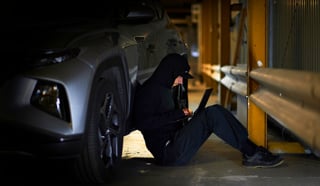When it comes to fleet safety, size is not important. The benefits of improving the safety of drivers are the same if a fleet is five or 5,000 vehicles.
Two small fleets have recognised this and have taken major steps to address the risk facing their drivers.
In recognition, the pair have just been named business champions by RoadSafe as part of its Driving For Better Business scheme.
Langleys Solicitors, which runs just six company cars and two pool cars, was named a champion for its outreach programme to help other businesses address their road risk.
Middlesbrough-based RES Teesdale Scaffold, with its fleet of 10 vehicles, has published a Vehicle User Guide (see panel) to improve its safety.
Small businesses tend not to have fleet managers and so addressing at-work driver risk may not get the attention it deserves.
While it has a small fleet of company vehicles, almost half of Langleys’ 300 employees drive their own cars on business.
The company, which specialises in road traffic legislation, has implemented its own comprehensive best practice driving for work policy following an internal review. It required a major cultural shift in the business.
“Initially, there was some resistance,” said Jeremy Scott, who championed the road safety strategy.
“However, the process of explaining how the law was now being enforced, and why Langleys considered activities carried out by individuals driving at work to be its responsibility, resulted in staff realising that we were taking our duty-of-care responsibilities seriously and that they were the beneficiaries.
"Attitudes quickly changed.”
Langleys is now using its knowledge and expertise in its outreach pro-gramme to help local firms manage their work-related road safety.
“There is greater need than ever for businesses to seriously think about issues such as driver fatigue and how it directly affects their employees during both working hours and also on the commute home,” said Scott.
“A number of investigations show that the police and HSE will be jointly investigating accidents with a view to including not only the employee who was driving, but also the employer, in any prosecution.
“Company directors and other senior employees could find themselves in the dock facing a prison sentence.”
Scaffolding company RES Teesdale Scaffolding tells its employees to use the same safety standards they use during work when they are driving.
Sales manager Andy Davison said: “All of our vehicles are liveried so we want to be seen as a promoter of good and considerate driving.
“If there is an incident other road users will soon see that it is one of our vehicles. We want to avoid that.”
The firm’s fleet includes cars, HGVs and vans.
Drivers collectively clock up around 125,000 miles a year.
“We have a good road safety record and therefore have not seen our insurance costs increase, which in a rising market for premiums is excellent,” said Davison.
“However, while the incidents our vehicles are involved in may be minor if we can eliminate them completely that will further contain vehicle repair costs and reduce vehicle downtime.
“Cutting downtime is important because if our vehicles are off the road they are not working and the business is not earning money.”
The company included driving within its all-embracing health and safety focus several years ago.
It also monitors damage and maintenance through vehicle defect report books, which must be filled in by drivers before each journey.
“There is considerable determination, pride and an element of competition between employees. This ensures that their performance standards remain high and that incidents are minimised,” said Davison.
The Vehicle User Guide addresses:
- Driver competence
- Driver licence checking
- Driver actions
- Mobile phone ban while driving
- Driver health
- Driver training
- Vehicle maintenance
- Vehicle condition checks
- Vehicle safety equipment
- Loading/unloading vehicles
- Goods in transit
- Journey time, distance, route planning and driver and vehicle records
- Weather conditions
- Vehicle breakdown procedures
- What to do in an accident
For all the latest advice and information on fleet management, have a read of our fleet operations section.





















Login to comment
Comments
No comments have been made yet.